

Nikon’s Z50 DX-format mirrorless camera performs impressively on the microscope
With its Z50, the first APS-C model in the Z series, Nikon offers state-of-the-art camera technology with 4K video recording and a tilting touchscreen at a highly competitive price to gain market share in the lower-cost segment – and will likely succeed.
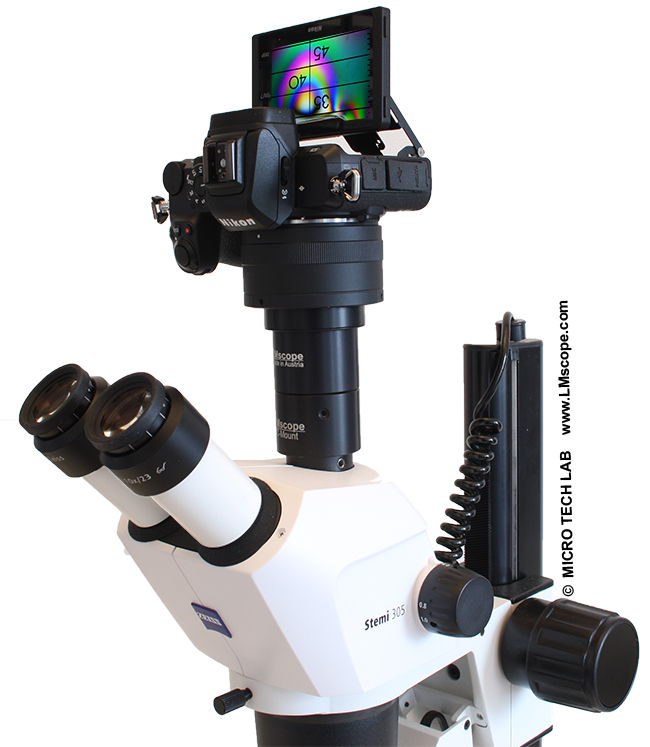
The Z50, Nikon’s first APS-C-based Z-series mirrorless camera, has a robust build quality. It employs a DX-format sensor and Nikon’s new Z-mount, which is notably larger than the traditional F-mount. Various online dealers offer the Z50 at a price tag starting at € 550 (body only, price information as of April 2020). The Z50 features cutting-edge camera technology and is excellently suited for use with a microscope.
Below are the key tech specs of the Nikon Z50:
- CMOS sensor, 23.5 x 15.7 mm
- 20.9 million pixels
- Up to 11 fps shooting
- Sensitivity range from ISO 100 to ISO 51,200
- Movie recording frame size (pixels) and frame rate: 3,840 x 2,160 (4K UHD); 30p (progressive)
- Slow motion 4x 1,920 x 1,080; 120p
- HDMI output connector (type D)
- Wi-Fi (wireless LAN)
- Weight: 395 g (body only)
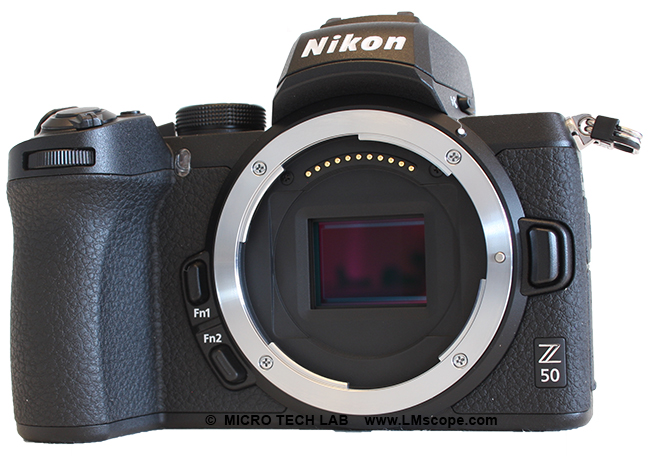
The body of the Z50 is very compact and weighs in at just 395 grams. It features the same Z-mount (Nikon’s interchangeable bayonet-type lens mount) that was previously reserved to the Nikon Z6 and Z7 full-frame mirrorless cameras.

The screen tilts out and downward, which makes the camera handy for a wide variety of uses and also makes it easier to work when seated and the camera is not tethered to a computer, because the screen can be tilted to an angle that allows viewing of the Live View image without having to get into awkward positions.
With the touch function of the screen, the user can control just about all of the camera’s functions.
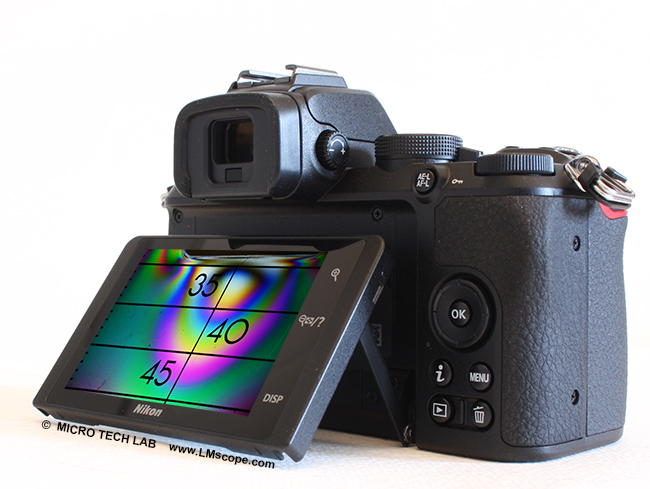
In terms of ports, the Z50 has a micro HDMI port, which can be used to connect the camera to an external monitor, and a USB socket. Both ports are located on the side of the camera. The USB port can be used to hook up the camera to a computer and control it remotely with Nikon’s Camera Control 2 software. The battery of the Nikon Z50 can be charged either via the provided charger or via the USB port, like all Z-series cameras. However, the camera must be left turned off when charging; it won’t charge with the power switch turned on.

The Nikon Z50 is attached to the C-mount connection of the microscope using an LM microscope adapter with integrated precision optics:
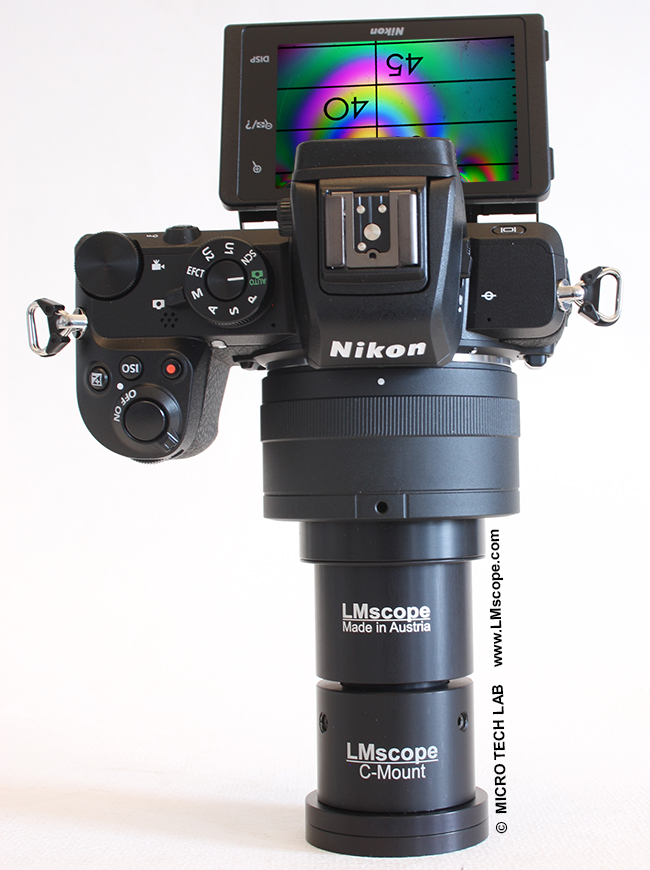
The LM microscope adapter with integrated optics and a 30 mm tube connection are used to attach the camera to the eyepiece tube of the microscope:
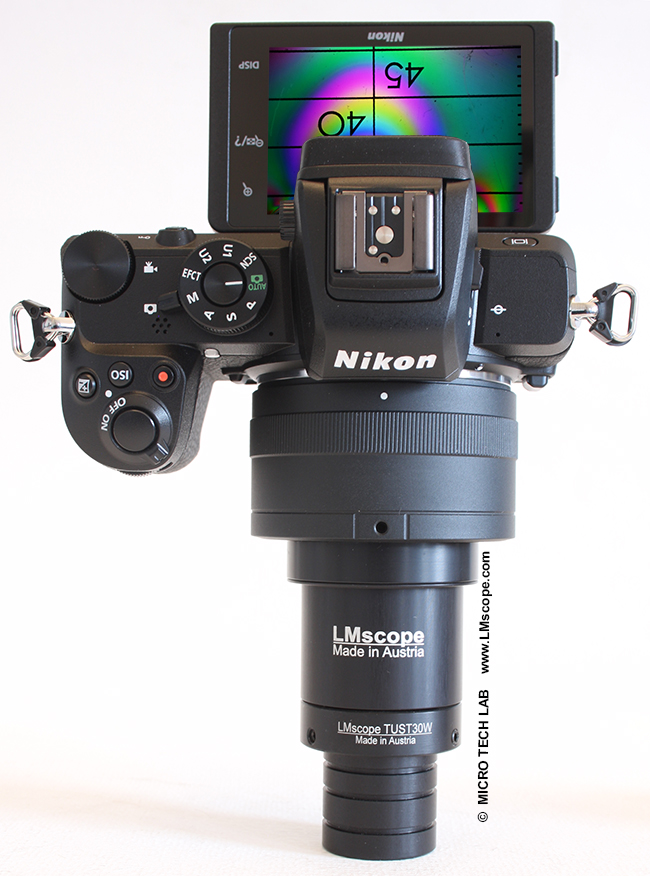
The image below shows the Nikon Z50 attached to the C-mount photo port of a Zeiss Stemi trino stereo microscope.

The image below shows the camera connected to the eyepiece tube of the microscope. When you use a camera with a microscope like this, you remove the eyepiece first and then slide the camera, together with the adapter, into the tube where the eyepiece was. This solution also delivers very good image results and offers great flexibility because it can be used on many different microscopes.
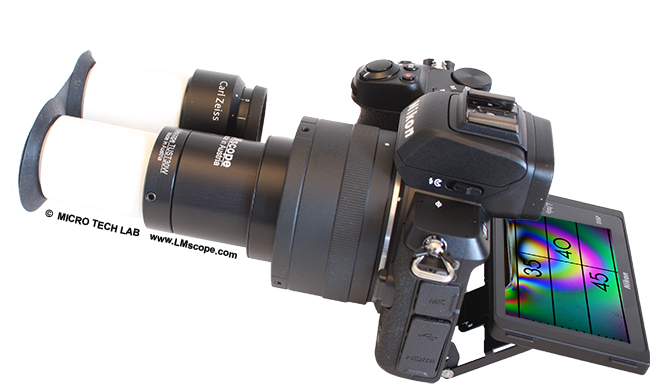
Especially in professional microscope imaging applications, the ability to control the camera remotely from the computer is a key criterion for obtaining satisfactory results.
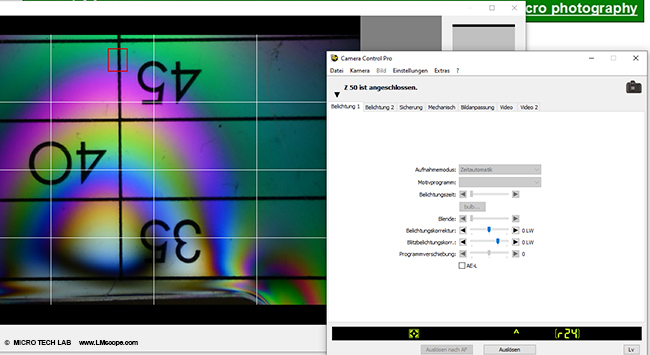
With Nikon’s Camera Control Pro 2 software, the camera can be conveniently controlled remotely from a computer. The software provides full control over the camera, including Live View, focus, exposure and many other settings (white balancing, ISO, etc.), which really helps to improve workflow efficiency.
We strongly recommend installing the latest version of the software in order to use the camera to its full potential.
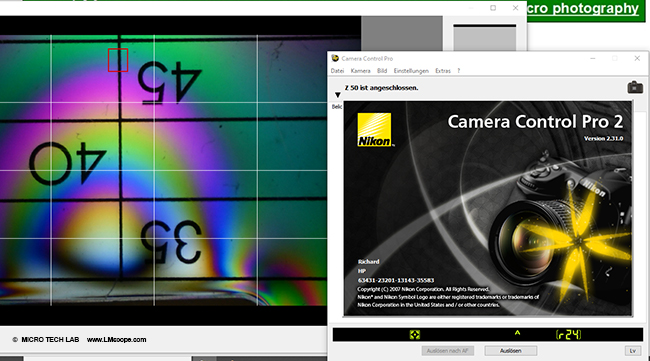
The Nikon Z50 has a very sensitive image sensor with a wide dynamic range for capturing vivid images with great contrast and rich colours.
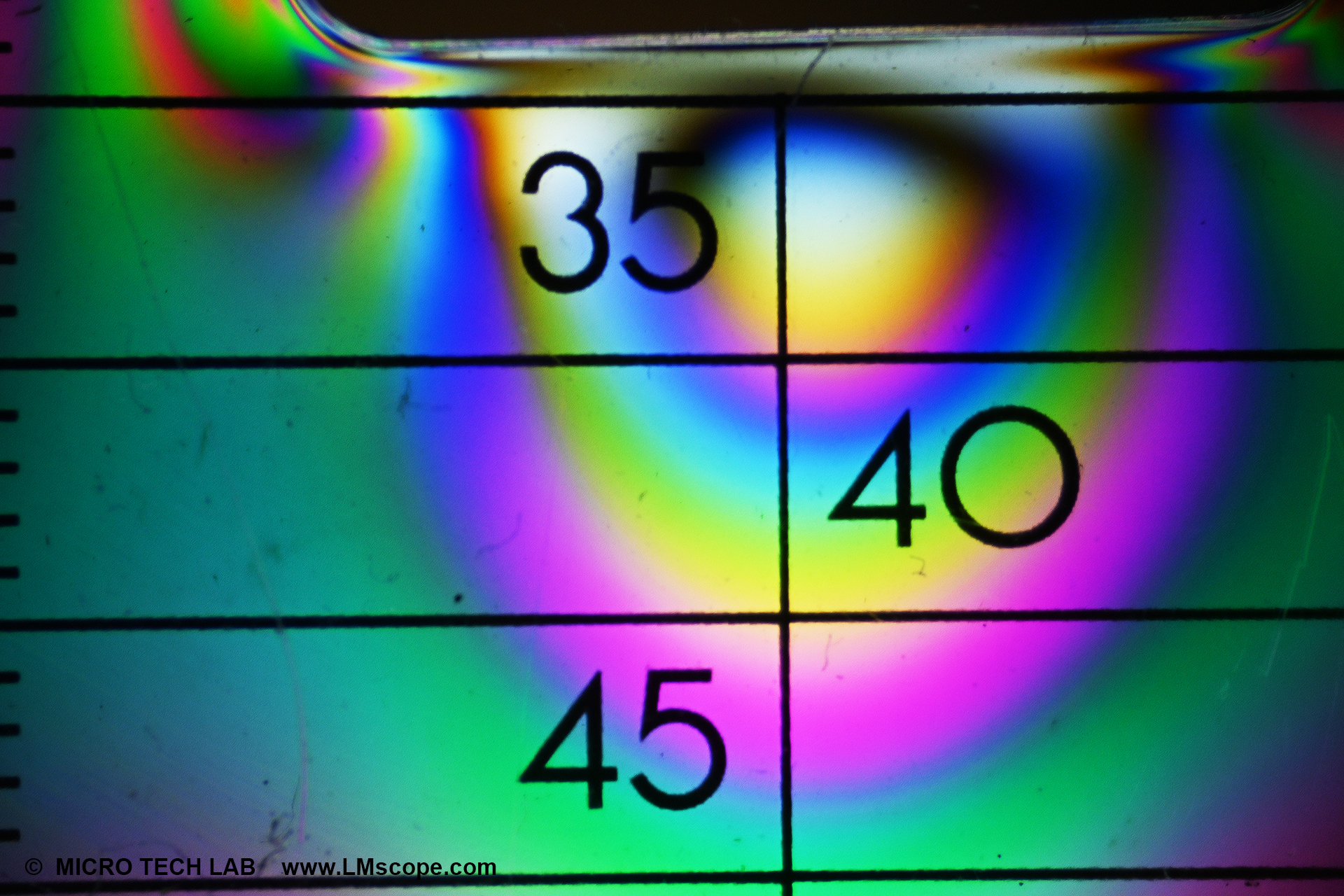
The image quality of the bargain-priced Z50 is only slightly inferior to that of full-frame cameras, which carry a much higher price tag. The Z50 lacks the 5-axis sensor-based stabilisation available on the other models in the Z-series, but we were still pleasantly surprised by the image quality of this camera, especially considering its price tag. Automatic exposure control is also supported with the original CPU lenses being used. This is an important feature when the camera is used to take photographs through a microscope. Compatibility with non-CPU lenses is a matter of course in expensive cameras, but is often limited in lower-priced entry-level models.
The image below gives a good size comparison of the sensors on Nikon’s Z50 and Z7 cameras:
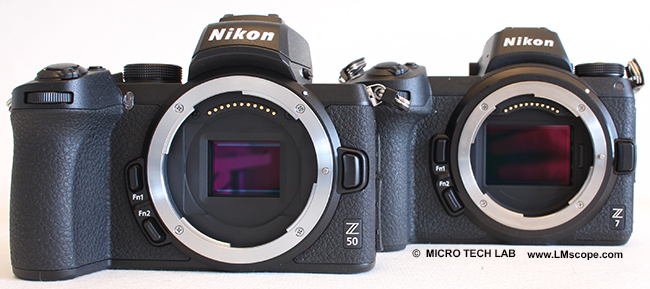
Conclusion: We really liked how the Nikon Z50 performed on the microscope. Overall, it is an impressive mirrorless APS-C camera with state-of-the-art features that delivers both quality and capabilities at a budget-friendly price.
14.04.2020